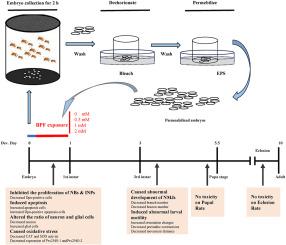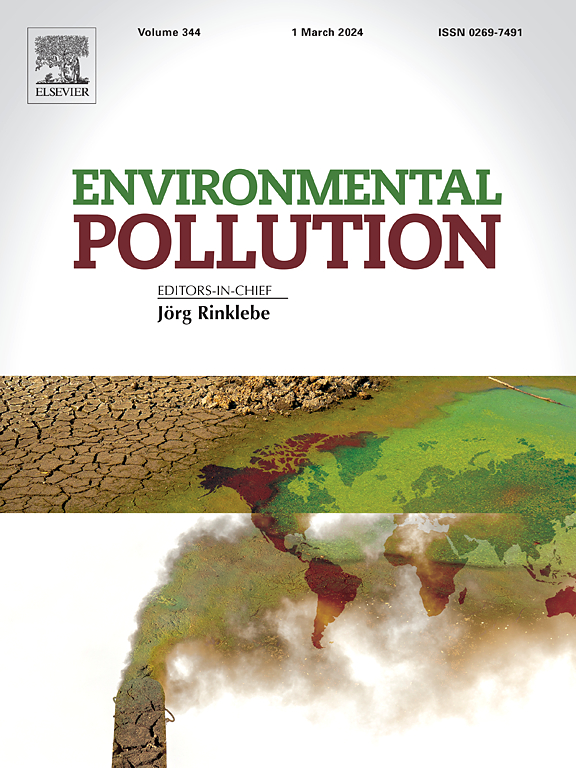Embryonic BPF exposure induces neurodevelopmental and neurobehavioral toxicity by affecting neural stem cell proliferation in Drosophila
IF 7.6
2区 环境科学与生态学
Q1 ENVIRONMENTAL SCIENCES
引用次数: 0
Abstract
BPF is a ubiquitous environmental chemical that has been shown to affect neurodevelopmental toxicity from animals to humans. Whether BPF exposure affects neural stem cell proliferation and differentiation is unknown. Here, we utilized a method of permeabilization of Drosophila embryos to analyze the effects of exposure to 0.5 mM, 1 mM, and 2 mM BPF on the proliferation and differentiation of neural stem cells. Our results showed that BPF exposure reduced the number of neuroblasts and intermediate neural progenitors during the embryonic stage, which caused the neuron/glial cell ratio to be out of balance, with a decrease in the number of neurons and an increase in the number of glial cells. BPF exposure caused neurotoxicity by reducing the activities of the antioxidant enzymes CAT and SOD, the downregulation of the transcriptional levels of oxidative stress-related genes, which triggered oxidative damage. As a result, embryonic BPF exposure affected the development of the neuromuscular junctions (NMJs) by reducing the number of axon branches and synaptic buttons, decreasing the number of peristaltic contractions, and reducing larval locomotion. In conclusion, our results demonstrate that embryonic BPF exposure disrupts neural stem cell proliferation, causing neurodevelopmental toxicity and abnormal larval behavior.


求助全文
约1分钟内获得全文
求助全文
来源期刊

Environmental Pollution
环境科学-环境科学
CiteScore
16.00
自引率
6.70%
发文量
2082
审稿时长
2.9 months
期刊介绍:
Environmental Pollution is an international peer-reviewed journal that publishes high-quality research papers and review articles covering all aspects of environmental pollution and its impacts on ecosystems and human health.
Subject areas include, but are not limited to:
• Sources and occurrences of pollutants that are clearly defined and measured in environmental compartments, food and food-related items, and human bodies;
• Interlinks between contaminant exposure and biological, ecological, and human health effects, including those of climate change;
• Contaminants of emerging concerns (including but not limited to antibiotic resistant microorganisms or genes, microplastics/nanoplastics, electronic wastes, light, and noise) and/or their biological, ecological, or human health effects;
• Laboratory and field studies on the remediation/mitigation of environmental pollution via new techniques and with clear links to biological, ecological, or human health effects;
• Modeling of pollution processes, patterns, or trends that is of clear environmental and/or human health interest;
• New techniques that measure and examine environmental occurrences, transport, behavior, and effects of pollutants within the environment or the laboratory, provided that they can be clearly used to address problems within regional or global environmental compartments.
 求助内容:
求助内容: 应助结果提醒方式:
应助结果提醒方式:


